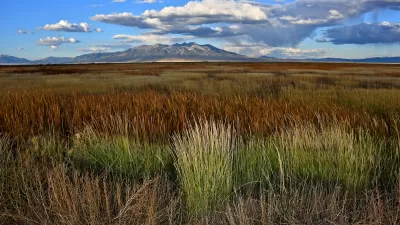Community activists in the South Bronx are working to "daylight" a long-buried stream and re-integrate some natural water treatment processes into the dense urban atmosphere.
This article form The New York Moon looks at the history of the stream and the efforts to bring it back.
"This project is no quixotic effort to stand athwart centuries of urban development yelling "stop!" Petersohn and his colleagues hope not only to recover a lost ecosystem but to put this system to work serving the needs of a twenty-first century urban community. Designed by the Gaia Institute of New York City, whose mission is to explore "how human activities and waste products can be treated to increase ecological productivity, biodiversity, environmental quality, and economic well being," the wetland will act as a water-catchment system that takes millions of gallons of water a year out of New York City's combined sewer system, reducing processing costs and preventing hazardous overflows."
FULL STORY: Rewiring the City

Study: Maui’s Plan to Convert Vacation Rentals to Long-Term Housing Could Cause Nearly $1 Billion Economic Loss
The plan would reduce visitor accommodation by 25,% resulting in 1,900 jobs lost.

North Texas Transit Leaders Tout Benefits of TOD for Growing Region
At a summit focused on transit-oriented development, policymakers discussed how North Texas’ expanded light rail system can serve as a tool for economic growth.

Why Should We Subsidize Public Transportation?
Many public transit agencies face financial stress due to rising costs, declining fare revenue, and declining subsidies. Transit advocates must provide a strong business case for increasing public transit funding.

How to Make US Trains Faster
Changes to boarding platforms and a switch to electric trains could improve U.S. passenger rail service without the added cost of high-speed rail.

Columbia’s Revitalized ‘Loop’ Is a Hub for Local Entrepreneurs
A focus on small businesses is helping a commercial corridor in Columbia, Missouri thrive.

Invasive Insect Threatens Minnesota’s Ash Forests
The Emerald Ash Borer is a rapidly spreading invasive pest threatening Minnesota’s ash trees, and homeowners are encouraged to plant diverse replacement species, avoid moving ash firewood, and monitor for signs of infestation.
Urban Design for Planners 1: Software Tools
This six-course series explores essential urban design concepts using open source software and equips planners with the tools they need to participate fully in the urban design process.
Planning for Universal Design
Learn the tools for implementing Universal Design in planning regulations.
City of Santa Clarita
Ascent Environmental
Institute for Housing and Urban Development Studies (IHS)
City of Grandview
Harvard GSD Executive Education
Toledo-Lucas County Plan Commissions
Salt Lake City
NYU Wagner Graduate School of Public Service





























